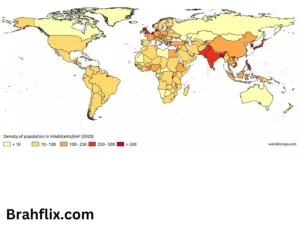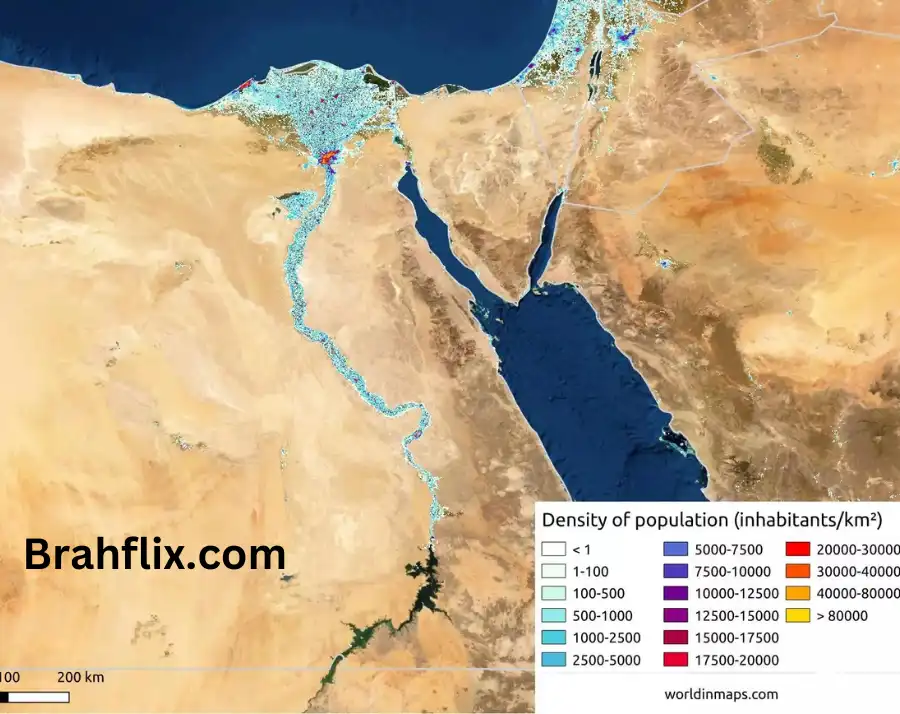Introduction
In the study of population geography, What is physiological population density stands as a crucial metric that offers insights into the relationship between a population and its available resources. Unlike arithmetic population density, which simply divides the total population by the total land area, physiological population density provides a more nuanced view by considering arable land. This article will explore what physiological population density is, its significance, and how it affects various aspects of human geography and planning.

Key Takeaways:
- Definition: Physiological population density refers to the number of people per unit of arable land.
- Importance: It provides a clearer picture of population pressure on productive land.
- Applications: Useful in urban planning, resource management, and environmental assessments.
Understanding Physiological Population Density
Physiological population density is defined as the number of people per unit of arable land, which is land suitable for agriculture. This metric is crucial for understanding how population pressures are distributed over the land that actually supports human life. By focusing on arable land, this measure highlights the relationship between population size and the land available for growing food, which is essential for sustaining human populations.
The Difference Between Physiological and Arithmetic Density

To grasp the importance of physiological population density, it is helpful to compare it with arithmetic population density. Arithmetic density is calculated by dividing the total population of a region by its total land area, regardless of land use. In contrast, physiological density focuses specifically on arable land, which provides a more accurate reflection of the strain on land that supports agriculture.
| Metric | Arithmetic Density | Physiological Density |
|---|---|---|
| Definition | Total population / Total land area | Total population / Arable land area |
| Focus | General land availability | Productive land for agriculture |
| Implication | General population pressure | Pressure on land that supports food production |
Why Physiological Population Density Matters
Physiological population density is an important indicator for several reasons:
- Resource Management: It helps in understanding how much pressure a population places on productive land, which is crucial for effective resource management and planning.
- Urban Planning: Cities with high physiological densities may face challenges in securing sufficient arable land for food production, influencing urban expansion and land use strategies.
- Environmental Impact: Areas with high physiological densities often face greater environmental pressures, such as over-farming and land degradation.
Measuring Physiological Population Density
To calculate physiological population density, you divide the total population of a region by the area of arable land within that region. This metric can be expressed as:
Physiological Population Density= Total Population / Arable Land Area
For example, if a country has a population of 50 million people and 10 million hectares of arable land, the physiological population density would be 5 people per hectare.
Case Studies and Examples
- China: With its large population and limited arable land, China’s physiological density is notably high. This high density puts significant pressure on its agricultural resources and contributes to issues such as soil degradation and water scarcity.
- Egypt: The majority of Egypt’s population lives along the Nile River, where arable land is concentrated. This results in a high physiological density, highlighting the critical role of the Nile for sustaining the country’s population.
The Role of Physiological Density in Urban Development

Urban development strategies must take physiological population density into account to ensure sustainable growth. Areas with high physiological density often require:
- Innovative Agricultural Practices: To maximize food production on limited land.
- Efficient Land Use: Balancing between residential, industrial, and agricultural needs.
- Sustainable Development: Implementing practices to reduce the strain on arable land.
Implications for Environmental Sustainability
High physiological population density can lead to several environmental challenges:
- Over-farming: Intensive farming practices to meet the food needs of a large population can deplete soil nutrients and reduce land productivity.
- Deforestation: Expansion of agricultural land can lead to deforestation, impacting biodiversity and ecosystems.
- Water Use: Increased demand for water resources for irrigation can strain local water supplies and affect water availability for other uses.
Key Statistics and Trends
- Global Trends: As of recent data, countries like Bangladesh and India have some of the highest physiological population densities in the world, reflecting the significant pressure on their arable land.
- Historical Trends: Historically, regions with high physiological densities often experienced population migrations and shifts as a response to resource constraints.
FAQs
How is physiological population density different from arithmetic density?
Physiological population density focuses specifically on arable land, providing a clearer picture of agricultural pressure, while arithmetic density considers total land area.
Why is physiological population density important for urban planning?
It helps urban planners understand the impact of population growth on arable land and make informed decisions about land use and resource management.
Can physiological population density affect environmental sustainability?
Yes, high physiological density can lead to over-farming, deforestation, and increased water use, impacting environmental sustainability.
What are some strategies to manage high physiological population density?
Strategies include adopting innovative agricultural practices, optimizing land use, and implementing sustainable development practices.
How does physiological population density impact food security?
High physiological density can strain food production systems, making it crucial to enhance agricultural efficiency and resource management to ensure food security.
Conclusion
Understanding physiological population density provides valuable insights into the relationship between population and arable land. By focusing on productive land rather than total land area, this metric helps to gauge the true pressure of population on agricultural resources. High physiological density can influence urban planning, resource management, and environmental sustainability, highlighting the need for strategic planning and innovative solutions.
What are your thoughts on how physiological population density impacts your region or country? How do you think urban planners should address these challenges? Feel free to share your insights and explore more articles on related topics.
CTA: For more information on related topics, explore our other blog posts and stay informed about global and local geographic trends.


